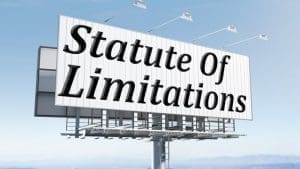Using LinkedIn to Generate Quality Legal Leads
Individuals often ask, “How can attorneys use LinkedIn to attract high-value clients and generate quality legal leads?” The answer lies in adopting a targeted outreach strategy that combines profile optimization, thought leadership, and ethical networking to position your firm as the premier legal resource in your region. Unlike broad advertising campaigns, LinkedIn enables attorneys to build genuine professional relationships based on trust and expertise, ultimately driving more qualified leads than general social media platforms.
The modern legal marketplace demands more than a static website or generic social posts. Prospective clients conduct detailed online research, comparing attorney profiles, reading peer recommendations, and evaluating law firm thought leadership before making contact. LinkedIn sits at the intersection of these activities, allowing attorneys to showcase professional branding, demonstrate legal expertise, and engage directly with decision-makers and referral sources. By leveraging LinkedIn effectively, law firms can tap into a network of professionals, in-house counsel, and business leaders who regularly access the platform for legal insights and referrals.
What Makes LinkedIn Ideal for Legal Lead Generation?
LinkedIn stands apart from other social networks because it caters to a professional mindset. Executives, corporate counsel, and business owners log in expecting industry updates, legal trend analyses, and opportunities to connect with subject-matter experts. No platform delivers more B2B leads: LinkedIn generates roughly 80% of social-media-driven B2B leads, and 96% of executives prefer it for reliable content distribution1. For attorneys seeking lead generation, this concentrated audience translates into high-value connections rather than casual followers.
Moreover, LinkedIn’s advanced targeting options allow lawyers to narrow their outreach by industry, job title, company size, and geographic location. Whether you serve small businesses in Seattle, construction clients in Texas, or family law matters across California counties, LinkedIn lets you pinpoint the exact demographic that requires your specialized legal services. This degree of precision mitigates wasted marketing spend and ensures quality lead pipelines filled with prospects already predisposed to legal consultations.
How Do Lawyers Optimize Their LinkedIn Profiles for Lead Generation?
An optimized LinkedIn profile functions as a digital storefront that showcases your credentials, experience, and unique value proposition. Follow these profile optimization steps:
- Compelling Headline: Replace your job title with a benefits-oriented headline, such as “Protecting California Businesses with Expert Employment Law Counsel.”
- Professional Photo: Profiles with photos receive 21 times more views and 36 times more messages, because a headshot humanizes your presence and builds initial trust2.
- Custom URL: Create a concise custom URL (linkedin.com/in/YourName) to simplify sharing and enhance discoverability.
- Keyword-Rich Summary: Incorporate location-specific terms such as “Chicago real estate attorney” or “New York estate planning counsel” to capture local searches and voice queries like “Who’s the top estate lawyer in Manhattan?”
- Experience and Publications: Detail landmark cases, published articles, or speaking engagements. Emulate the concise, principled tone of Justice Clarence Thomas by combining factual precision with accessible language.
- Skills and Endorsements: Highlight high-value keywords—professional branding, referral network, client engagement, thought leadership, InMail messaging, and Sales Navigator—to strengthen search rankings and internal linking across your firm’s content.
By presenting a polished, keyword-optimized profile, attorneys enhance both search engine visibility and LinkedIn’s internal search relevance, increasing the likelihood that potential clients and referral partners will discover and engage with your practice.
How Can Attorneys Develop and Share Content That Attracts Prospects?
Content remains king on LinkedIn. Lawyers should publish a mix of long-form articles, how-to guides, and list posts, as these formats receive up to five times more engagement and 72% more backlinks than shorter posts2. Effective content marketing strategies include:
- How-To Guides: Offer step-by-step insights, such as “How to File an OSHA Appeal in Texas,” addressing urgent legal concerns with practical advice.
- List Posts: Use numbered lists for quick readability, e.g., “5 Key Clauses Every California Commercial Lease Must Include.”
- Case Study Summaries: Discuss public rulings or composite scenarios to illustrate successful outcomes without breaching confidentiality.
- Regulatory Updates: Analyze recent state law changes, such as New York’s revised estate tax thresholds or Florida’s new condominium regulations.
- Thought Leadership Pieces: Share moderate, principled commentary on topics covered by center-right outlets like National Review, framing the analysis within a conservative-leaning perspective that values constitutional protections and regulatory restraint.
Each post should open with a direct answer to a voice query, for example: “Individuals ask, ‘What should I know about OSHA appeals in Texas?’ Attorneys must navigate a six-month deadline and procedural steps in local OSHA tribunals.” This approach optimizes for featured snippets and voice assistants, increasing the chances your content becomes the default spoken response.
What Engagement Tactics Convert Connections into Leads?
Building a network is only the first step. To convert connections into actionable leads, attorneys must engage actively and authentically:
- Prompt Responses: Reply to comments and messages within 24 hours to demonstrate attentiveness and professional courtesy.
- Meaningful Comments: Offer thoughtful insights on peers’ posts, adding value without overt self-promotion.
- Referral Requests: Politely ask satisfied clients or colleagues to introduce you to prospects, framing it as a mutual benefit rather than a cold ask.
- Milestone Acknowledgments: Congratulate connections on promotions, publications, or bar admissions to strengthen professional bonds.
- LinkedIn Polls and Surveys: Solicit opinions on legal trends (e.g., “What compliance challenge concerns your firm most in 2025?”) to spark engagement and gather market intelligence.
By focusing on client engagement rather than aggressive marketing, attorneys nurture relationships that naturally evolve into consultations and referrals. LinkedIn analytics confirm that active engagement drives 89% more effectiveness for organic law-firm content than any other platform1.
How Do Targeted Outreach and InMail Build High-Value Relationships?
LinkedIn’s InMail messaging and connection requests offer personal, one-to-one outreach unmatched by email. However, effective outreach requires finesse:
- Research: Review the prospect’s profile and identify shared connections or interests.
- Personalized Introduction: Begin with a reference to recent activity—“I enjoyed your post on municipal zoning reform in Chicago.”
- Value Offer: Provide something of immediate benefit, such as a white paper on local land-use cases or an invitation to a free clinic on fiduciary duty under California law.
- Clear Call to Action: Suggest a brief call, e.g., “Would you be open to a 10-minute discussion this week to explore whether my experience could support your upcoming development project?”
- Follow-Up Strategy: If no response arrives in one week, send a polite follow-up reaffirming the value you can offer based on their profile.
By combining targeted outreach with first-party data—such as website visitors identified via LinkedIn cookies or Sales Navigator—law firms can focus on warm leads already familiar with their brand, yielding higher response and conversion rates.
What Role Do LinkedIn Ads Play in Generating Qualified Leads?
While organic tactics lay the groundwork, LinkedIn lead generation ads offer scalable options for capturing high-quality prospects:
- Sponsored Content: Promote thought-leadership articles or case studies to targeted audiences based on geography, firm size, or job titles.
- Lead Gen Forms: Use native forms that pre-populate contact data, reducing friction and boosting conversion rates by up to 50%.
- Dynamic Ads: Personalize creative with the prospect’s name or company logo to increase click-through and lead quality.
- Retargeting Campaigns: Focus on users who have engaged with your website or prior LinkedIn content, rather than cold audiences.
A shift from cold lead generation to retargeting cold audiences produces significantly higher lead quality, as attorneys connect with professionals already interested in their services. Allocate budget to retarget warmed audiences and measure ROI by tracking metrics such as form completion rate, cost per lead, and downstream conversion to consultations.
How Can Law Firms Leverage LinkedIn Sales Navigator Effectively?
LinkedIn Sales Navigator enhances outreach precision through advanced search filters and real-time lead recommendations. Key strategies include:
- Account Lists: Segment target firms—such as mid-sized manufacturers in Ohio—into lists for focused outreach.
- Lead Recommendations: Monitor recommended prospects based on shared interests or network connections.
- InMail Credits Management: Allocate InMail credits to top-tier leads, ensuring messages reach the most promising prospects.
- TeamLink Referral Mapping: Identify colleagues who can introduce you to your target leads, leveraging existing relationships for warm introductions.
By integrating Sales Navigator into your business development workflow, attorneys can maintain a referral network that continuously feeds new, relevant prospects into the pipeline.
How Should Attorneys Measure LinkedIn Lead Generation Success?
Effective measurement goes beyond mere connection counts. Focus on funnel metrics that reflect lead quality and revenue impact:
- Connection Growth: Track the number of new connections within target segments, ensuring relevance to your practice areas.
- InMail Response Rate: Monitor the percentage of positive replies to targeted messages.
- Content Engagement: Measure likes, comments, and shares on thought-leadership posts to gauge audience resonance.
- Lead Form Completions: Analyze conversion rates on Lead Gen Forms and the associated cost per lead.
- Consultation Bookings: Attribute new consultation requests directly to LinkedIn activities via UTM codes and CRM integration.
- Client Conversion Rate: Calculate the percentage of leads generated on LinkedIn that become retained clients, and compare deal sizes to verify premium client acquisition.
Prioritizing data-driven optimization ensures continuous improvement, as you refine messaging, content formats, and targeting filters based on real-world performance.
What Ethical and Bar Compliance Considerations Apply to LinkedIn Lead Generation?
Legal marketing must adhere to professional responsibility rules governing attorney advertising and client solicitation. Recommended practices include:
- No False Promises: Avoid guaranteed outcome claims or hyperbolic language.
- Avoid Direct Fee Offers: Do not promise “low flat fees” or “discounted rates” that may breach state bar guidelines.
- Respect Privacy: Do not harvest data from private groups or engage in prospecting that violates confidentiality obligations.
- Nofollow on Paid Links: When linking to paid or sponsored content, use nofollow tags to comply with advertising transparency expectations.
- Maintain Records: Document marketing communications in case of bar audits or client inquiries about solicitation methods.
Emulating a principled writing style reminiscent of Justice Thomas, your LinkedIn outreach should combine candor with professional integrity to reinforce trust and compliance.
How Can Local Practices Implement Geo-Targeted LinkedIn Strategies?
Local law firms benefit from geo-targeted LinkedIn strategies that emphasize proximity and jurisdictional expertise:
- Localized Keywords: Integrate city and county names into headlines and posts, e.g., “Denver HOA dispute resolution” or “Miami estate planning.”
- Local Case Spotlights: Discuss notable local rulings, such as recent Florida appellate decisions on condominium law.
- Geo-Specific Events: Host or sponsor webinars on state regulatory updates, inviting local professionals and regulators.
- Community Engagement: Share content about firm involvement in city bar associations or charitable legal clinics in your region.
- Localized Ads: Restrict ad targeting to a 20-mile radius around your office to capture neighbors who prefer local counsel.
By signaling your deep understanding of local laws and court procedures, you become the natural choice for clients seeking counsel within specific jurisdictions.
Conclusion
Using LinkedIn to generate quality legal leads demands a holistic approach that integrates LinkedIn optimization, content authority, targeted outreach, and ethical marketing. By emulating a concise, principled tone and leveraging advanced LinkedIn features, attorneys transform passive profiles into active business development hubs.
The keys to success include:
- Crafting a high-impact profile that speaks directly to potential clients’ needs.
- Publishing voice-friendly content with immediate answers to common legal questions.
- Engaging authentically through thought leadership and meaningful interactions.
- Employing Sales Navigator and InMail for precisely targeted outreach.
- Measuring success with data, focusing on consultation bookings and revenue conversions.
As the legal profession evolves, LinkedIn remains the definitive platform for connecting with decision-makers, building professional relationships, and securing premium clients. Attorneys who commit to ongoing optimization, ethical practices, and data-driven refinement will find their LinkedIn presence transforming into a robust lead generation engine—fueling sustainable growth and reinforcing conservative legal principles of individual rights, professional integrity, and principled advocacy.
- LinkedIn Marketing Strategies for Lawyers
- Complete Guide to LinkedIn Analytics for Legal Marketers 2025
- Management World Journal Article (ID 418)
- Bulletin Journal Article 566 Overview
- UV Journal Article 19062 Summary
- University of Dnipro Visnyk Article 683
- Legal Mechanisms to Improve Social Security Accounting Efficiency
- Metodol Journal Article ID 83
- EFP Journal Article 652 Overview
- UzhNU Journal Article 327216 Summary
- PDV Journal Article 6-1 Analysis
- Springer Article DOI 10.1007/s10846-024-02084-5
- LinkedIn Is for Lawyers: News and Resources
- Converting Law Firm Leads: Key Metrics to Track
- LinkedIn Guide for Lawyers: Ultimate Tips
- LinkedIn Lead Generation Strategies for 2024
- Legal Marketers’ Guide to Using LinkedIn for Law Firms
- Best Practices for Law Firms on LinkedIn
- SCIRP Journal Paper 133009 Information
- What Makes LinkedIn Posts Stand Out Among Legal Leaders


















